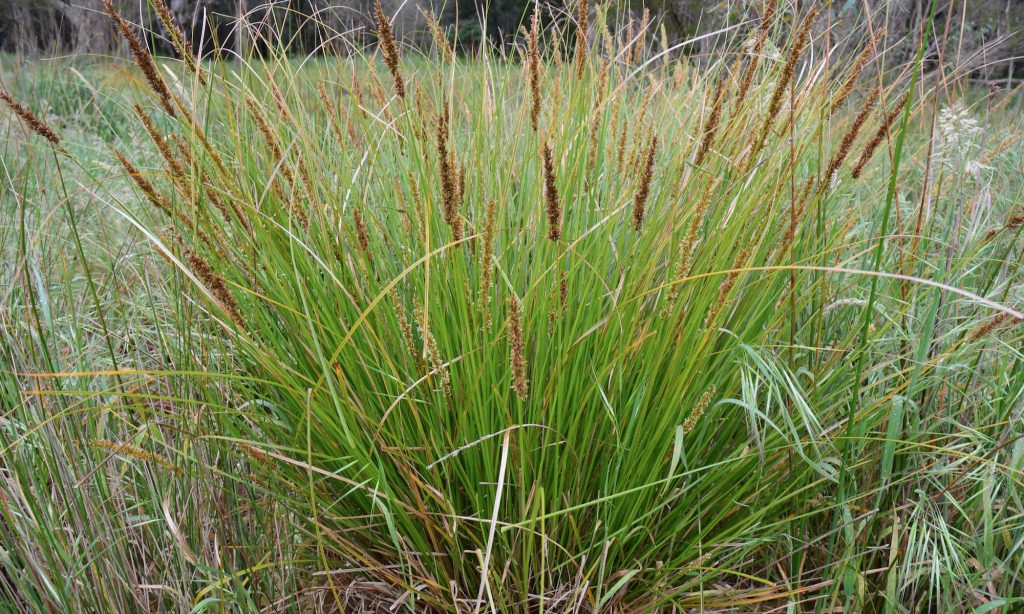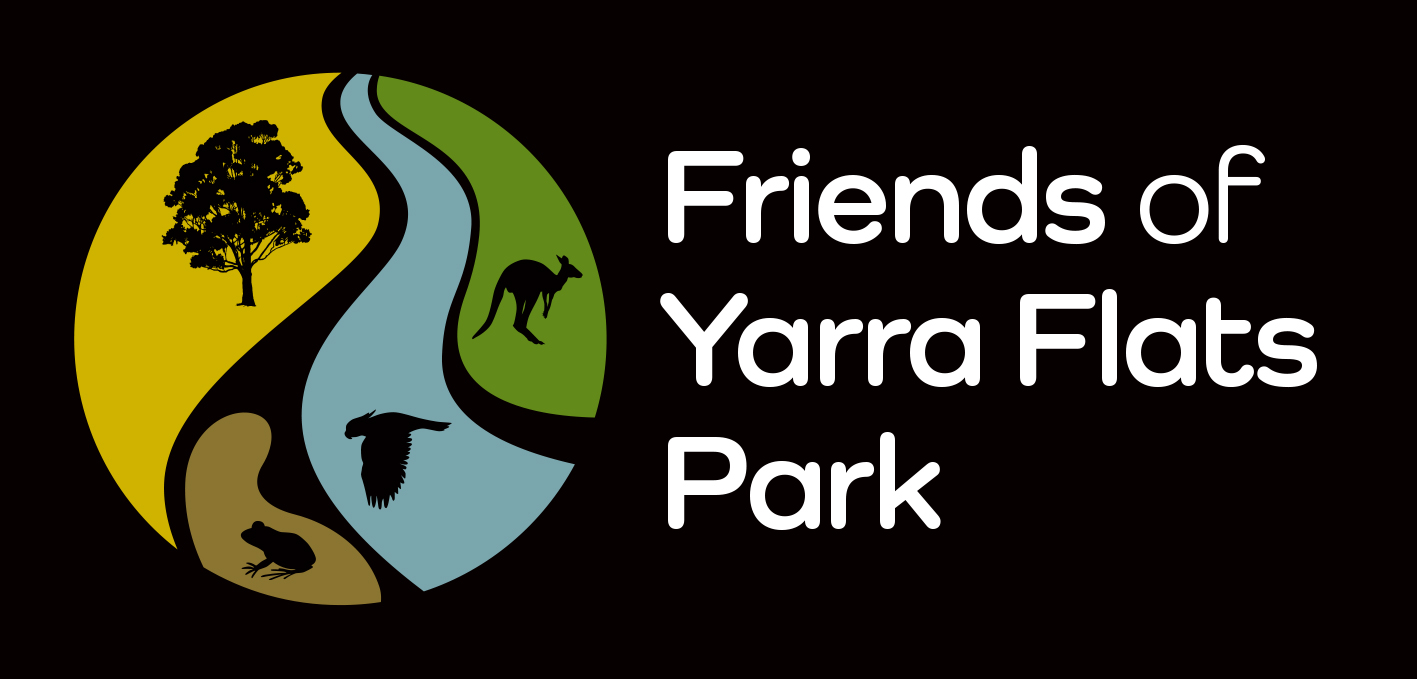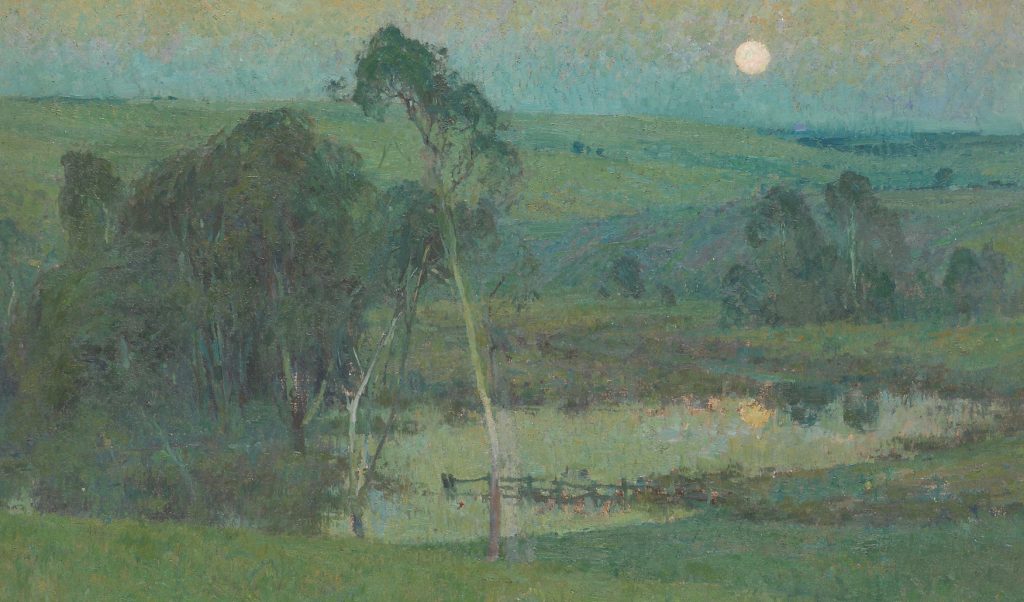This billabong is one of six billabongs in Yarra Flats Park.
Prior to European settlement there were over 70 billabongs along the Yarra from Templestowe to Kew but today only around a third of these remain.
Billabongs are the lifeblood of the Yarra
Billabongs are now realised to be critical for the good health of a riverine system. They support microscopic organisms (phytoplankton) that convert sunlight into food which feeds the plants and animals along the river and adjoining lands.
Birds, fish, eels, frogs, yabbies, platypus are some of the animals that depend on this process.
The old Phillips Fox Billabong
Three years ago the Phillips Fox Billabong was largely overgrown with weeds and exotic trees. These acted as a barrier to the proper functioning of the billabong and the growth of the remnent native wetland plants. Through grants from the Federal Government and Melbourne Water these weeds have largely been removed.
Establishing a healthy Phillips Fox Billabong
The enormous task of re-establishing a dense cover of native wetland plants and wildlife is now being undertaken by the Friends of Yarra Flats Park in partnership with Yarra Riverkeepers. This will take several years to complete with over 5,000 plants going in. The range of plants is quite large and includes grasses, sedges, rushes, shrubs and trees. At least 50 different species are being tried.
Some plants will succeed and others will fail which is how nature “works things out”. Soil types, local conditions, existing plants, flood frequency etc all vary along the Yarra. Little remains of the original ecosystem to act as a good guide to what will survive.
The aim is to maximise biodiversity. This increases the variety of animals present and the resilience of the ecological system to the many stresses on it, including climate change with its weather extremes.
It is an ephemeral billabong - meaning that it contains surface water some of the time and is dry at other times. This is a common situation for Australian billabongs with our variable rainfall and flooding patterns. Many Australian ecosystems have adapted to extremes such as floods, droughts, fire, cold and heat. This actually creates quite complex ecosystems that have various components that can flourish during these different phases.
The plants must be able to cope with floods and droughts. However, if the time between floods is too long the whole system breaks down and allows overgrowths such as algal blooms to occur. A healthy wetland will have the correct species to keep everything in balance including dragonflies to control mosquitoes!
The billabong currently has water in it due to the flood in June 2021 and October 2022. Water came along the channel that extends from the downstream end of the billabong to the river.
The floor of the billabong, which is presently underwater, is an example of a floodplain wetland environment where some of the plants are annuals such as Lesser Joyweed and can quickly flourish after the billabong dries out, while others are perennials that are slower growing and cope with being inundated. Sedges (esp. Carex sp.), Knotweeds and rushes are the main perennial plants.

The surrounds of the billabong are an example of a riparian (floodplain) forest. The trees are mainly River Red Gums with some Manna Gums and Blackwood & Silver Wattles. Some of the River Red Gums are hundreds of years old and many have hollows which wildlife love. River Reds need to be over one hundred years old to start developing these hollows, but the older the better.
The dense thicket forming understory shrub behind the billabong is Tree Violet which is native but a badly behaved one – it is rather out of control.
Billabongs are a haven for animal life. Several species of frog are present and on a warm summer evening their calls are delightful.
The more raucous calls of Rainbow Lorikeets, Currawongs and Sulphur Crested Cockatoos come from the old trees between the billabong and the river.
At times the park's resident Swamp Wallabies will visit the billabong, however, they are quite timid and not often seen.
Tiger snakes are present, and on the move from September to May.
History of the billabong
The Phillips Fox Billabong has quite a unique history to it.
Pre-European settlement, the surrounding riparian woodlands were fairly open with scattered areas of understory shrubs and lots of native grasses.
The Koori people frequented the area for food gathering and cultural reasons. Just behind the billabong is the large ancient ”Stepped Tree” which was used by the Koori for centuries.
Almost all of the surrounding vegetation was cleared for farmland in the 1830’s, starting only months after Batman and Fawkner arrived. The adjacent open paddocks are probably the oldest land still being farmed in Melbourne. In 1839 it became part of the “Charterisville Estate” which was established by David Charteris McArthur who was the Melbourne manager of the Bank of Australasia [forerunner of the ANZ Bank]. Gardens, orchards and vineyards were planted around the billabong.
Charterisville House (which still exists on Burke Road North) was used extensively by the Heidelberg School Impressionists from around 1890 to 1900. Many of these great artists would have stood next to this billabong admiring its Australian aesthetics. The Artist’s Trail painting “Moonrise” by Phillips Fox shows the billabong in 1900.
In 1912 Chinese established market gardens around the billabong. These lasted until the enormous flood of 1934 when everything was washed away. The Chinese wall in the entry channel is a relic of this era.
Flood events along the Yarra River are less common nowadays due to the Upper Yarra Dam, extraction of water and climate change induced lower rainfall. However, the Phillips Fox Billabong is the billabong in the park which most frequently contains water in these drier times. This is due to it having a low entry level for floodwater and it receives runoff from the adjacent escarpment. There is no stormwater system along The Boulevard above the billabong to divert water straight into the river. Instead rainwater is able to flow into the billabong or soak into the groundwater table which then feeds the billabong. Prior to European settlement this replenishment of billabongs from local water was actually critical for billabong health. Stormwater systems and lowered water tables are now posing major problems to our billabongs.
Unfortunately many weeds -small and large- have been allowed to invade the area over the last 185 years.
See the detailed history of the Phillips Fox area and the history of Yarra Flats Park for more information.
Please take some time to reflect on the diverse cultures that have all been drawn to this spot. Some have done so for the productive nature of the soil but the unique attraction of this river landscape has also been a powerful drawcard for many.
Other things of interest in the park: Best 10 attractions in Yarra Flats Park


